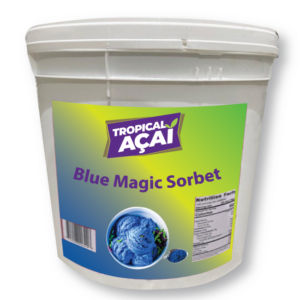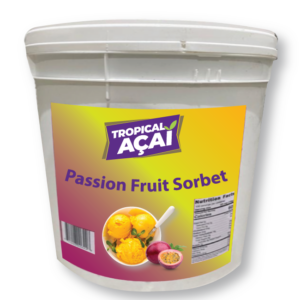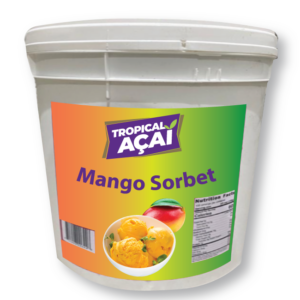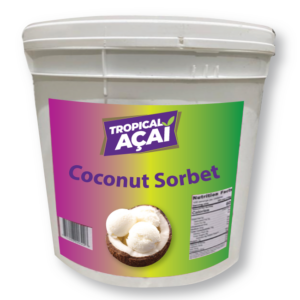Imagine waking up on a sunny morning, feeling refreshed and ready to start your day. As you enter your vibrant kitchen, a delicious aroma fills the air. You go to the blender, where you find a colorful array of fruits and ingredients waiting to be transformed into a nutritious and flavorful breakfast. Today, you decide to take your taste buds on a tropical adventure by combining two superfruits: acai and pitaya.
Acai berries, with their deep purple hue and rich antioxidant content, have long been touted for their potential health benefits. Pitaya, also known as dragon fruit, with its vibrant pink flesh and exotic appearance, is equally revered for its nutritional value. Together, these fruits create a refreshing and nourishing blend that not only tantalizes your taste buds but may also benefit your heart health.
Are you curious to learn more about the impact of acai and pitaya consumption on heart health? Let’s dive deeper into the topic and uncover the potential benefits these superfruits may offer.
Key Takeaways:
- Acai and pitaya are two superfruits with potential health benefits.
- Acai berries are rich in antioxidants and nutrients, while pitaya is known for its vibrant appearance and high antioxidant content.
- Consuming acai and pitaya may positively affect heart health, but further research is needed to understand their impact fully.
- Both fruits can be incorporated into your diet through smoothies, bowls, and other recipes.
- It is always recommended to consult with a healthcare professional before making any significant changes to your diet or adding supplements.
Now, let’s explore the antioxidant power of acai and pitaya in greater detail.
The Antioxidant Power of Acai and Pitaya
Both acai and pitaya are superfruits packed with antioxidants. These antioxidants protect our cells from damage caused by free radicals and unstable molecules that can harm our bodies and contribute to various health issues. Consuming acai and pitaya can provide a potent dose of antioxidants, helping promote overall health and well-being.
When it comes to antioxidant content, acai berries are particularly impressive. Acai berries contain even more antioxidants than other popular berries, such as cranberries, raspberries, and blueberries. The rich purple color of acai berries is due to the presence of anthocyanins, a type of antioxidant that has been linked to numerous health benefits.
Acai berries’ antioxidant properties have been associated with preventing chronic diseases, including cancer, heart disease, and diabetes. Consuming acai berries may help reduce oxidative stress, a significant contributor to the development of these conditions. Oxidative stress occurs when an imbalance between antioxidants and free radicals in the body leads to cellular damage and inflammation. The antioxidants in acai berries can help neutralize free radicals and reduce oxidative stress, promoting better health and disease prevention.
Dragon fruit, also known as pitaya, is another superfruit known for its high antioxidant content. Pitaya contains a class of antioxidants known as betacyanins, responsible for the fruit’s vibrant pink or red color. These antioxidants help protect against oxidative stress and inflammation, both underlying causes of chronic diseases.
Including acai and pitaya in your diet can help boost your overall antioxidant intake, supporting your body’s natural defense against free radicals. This can contribute to improved health, reduced risk of chronic diseases, and enhanced well-being.
Acai and Cholesterol Levels
Some early research suggests that consuming acai berries or acai juice may help lower LDL or ” bad” cholesterol levels while raising HDL or ” good” cholesterol levels. Excess LDL cholesterol can lead to the buildup of plaque in the arteries, increasing the risk of heart disease and stroke. By promoting a healthier balance of cholesterol levels, acai berries may contribute to better heart health. However, more research is needed to understand the full impact of acai on cholesterol levels.
The Cholesterol Connection
Cholesterol is a waxy substance naturally produced by your body and found in certain foods. There are two main types of cholesterol: LDL (low-density lipoprotein) and HDL (high-density lipoprotein). LDL cholesterol is often called “bad” cholesterol because it can build up in the arteries and form plaques, restricting blood flow and increasing the risk of heart disease. HDL cholesterol, on the other hand, is often called “good” cholesterol because it helps remove LDL cholesterol from the arteries and transports it to the liver for elimination.
The Role of Acai Berries
Acai berries are known for their high levels of antioxidants, which help protect the body against oxidative stress and inflammation. Some studies suggest that the antioxidants found in acai berries may positively affect cholesterol levels. One study published in the Journal of Agricultural and Food Chemistry found that acai had a protective effect on LDL cholesterol in human cells, preventing its oxidation, an essential step in plaque development in the arteries.
Another study published in the Nutrition Journal found that participants who consumed acai pulp experienced increased HDL cholesterol levels. While these studies show promising results, more research is needed to fully understand the impact of acai on cholesterol levels and its overall role in heart health.
The Potential of Pitaya
Pitaya, or dragon fruit, is another fruit that has been studied for its potential impact on cholesterol levels. Like acai berries, pitaya is rich in antioxidants and fiber, both beneficial for heart health. While there is not as much research specifically focused on pitaya and cholesterol levels, studies have shown that dragon fruit may positively affect other cardiovascular risk factors, such as reducing oxidative stress and improving insulin sensitivity.
Adding Acai and Pitaya to Your Diet
There are various ways to potentially incorporate acai and pitaya into your diet to improve your cholesterol levels. Acai berries can be found in frozen puree form, added to smoothies, or used as a topping for yogurt or oatmeal. Pitaya can be enjoyed fresh or frozen, making a colorful addition to smoothies, fruit salads, or a standalone snack.
It’s important to note that while acai and pitaya may have potential benefits for heart health and cholesterol management, they should be consumed as part of a balanced diet that includes a variety of fruits, vegetables, whole grains, lean proteins, and healthy fats. Consulting with a healthcare professional or registered dietitian can help you create a personalized plan that meets your health needs.
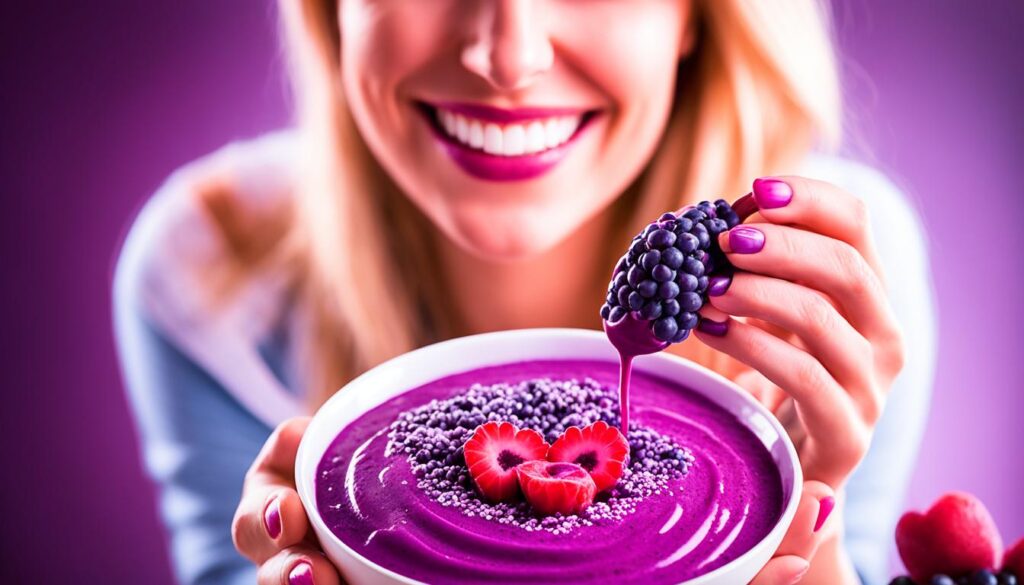
Blood Sugar Management with Acai and Pitaya
Preliminary studies suggest that acai and pitaya may positively affect blood sugar management. One study found that overweight individuals who consumed acai pulp for 30 days experienced improved blood sugar control. Acai and pitaya may help regulate blood sugar levels due to their fiber content and potential ability to regenerate insulin-producing cells in the pancreas. However, further research is needed to determine the exact mechanisms and optimal dosage for blood sugar management.
Acai and pitaya’s potential benefits in managing blood sugar levels are attributed to their rich nutrient profiles. Both fruits contain fiber, which slows down the digestion and absorption of carbohydrates, preventing rapid spikes in blood sugar levels. The fiber content in acai and pitaya also promotes satiety, helping to control appetite and regulate food intake.
Moreover, acai and pitaya are good sources of vitamins and minerals that regulate blood sugar. Acai is exceptionally high in vitamin C, associated with improved insulin sensitivity and lower blood sugar levels. Conversely, Pitaya provides essential nutrients like magnesium and antioxidants that support overall metabolic health.
Studies have shown that consuming acai and pitaya as part of a balanced diet may contribute to better blood sugar control. However, it’s important to note that these fruits should not be seen as a replacement for medical treatment or medication for diabetes. Individuals with diabetes should consult with their healthcare provider for personalized advice and guidance on managing blood sugar levels.
To incorporate acai and pitaya into your diet for blood sugar management, you can try the following:
- Add frozen acai or pitaya to your smoothies for a nutritious and delicious boost.
- Blend the fruits with your favorite toppings, such as granola, nuts, and fresh fruits, to create a refreshing acai or pitaya bowl.
- Slice fresh pitaya and enjoy it as a hydrating snack.
- For a healthier alternative, consider using acai or pitaya in desserts, such as homemade ice cream or sorbet.
Word of caution:
If you have any underlying medical conditions or are taking medications, consult with a healthcare professional before incorporating acai and pitaya into your diet. Additionally, consuming acai and pitaya in moderation is essential as part of a balanced diet, as excessive food consumption can lead to imbalances in blood sugar levels.
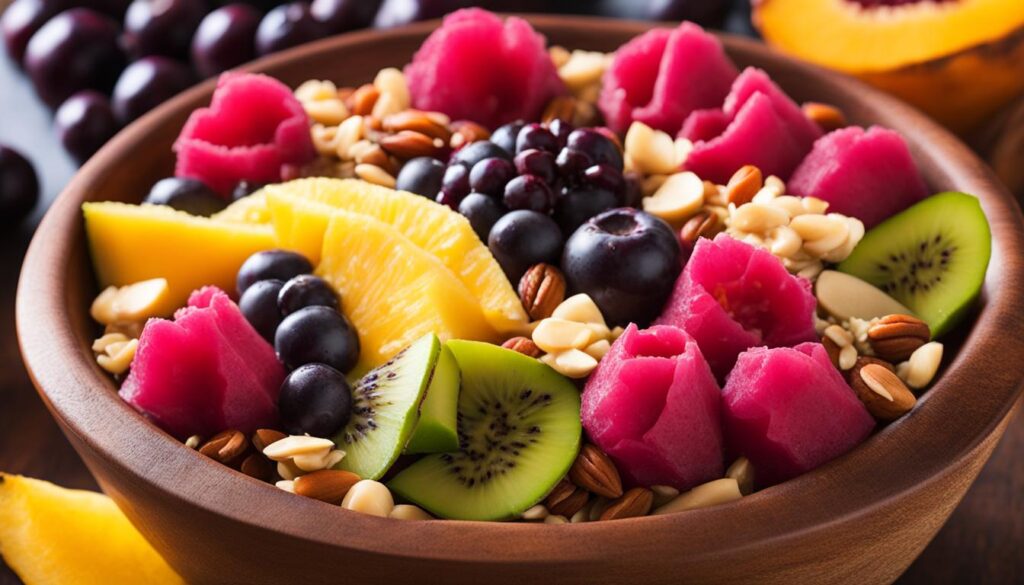
Acai and Pitaya in Beauty Products
Acai oil is a popular ingredient in beauty products thanks to its antioxidant properties. Antioxidants are crucial in protecting the skin from harmful free radicals and reducing oxidative damage, which can lead to signs of aging. Using skincare products infused with acai oil may help promote healthier, more youthful-looking skin.
Although the benefits of acai oil in beauty products are widely recognized, scientific research on its effectiveness is limited. However, anecdotal evidence and the abundance of antioxidants in acai oil suggest that it can be beneficial for maintaining skin health.
Why Acai Oil for Skincare?
Acai oil contains several compounds that contribute to its potential skincare benefits. These compounds include polyphenols, flavonoids, and phytosterols, all of which contribute to the oil’s antioxidant and anti-inflammatory properties.
Here are some potential benefits of using acai oil in your skincare routine:
- Antioxidant Power: Acai oil is rich in antioxidants that can combat free radicals, preventing them from damaging the skin cells. This can help reduce the appearance of wrinkles and fine lines.
- Moisturizing Properties: Acai oil is a great natural moisturizer. It provides nourishment to the skin and helps to retain moisture. It can help keep your skin hydrated, soft, and supple.
- Anti-inflammatory Effects: Acai oil contains anti-inflammatory compounds that help soothe and calm irritated skin. It may be beneficial for individuals with sensitive or acne-prone skin.
However, it is essential to note that while acai oil offers potential skincare benefits, results may vary depending on individual skin types and conditions.
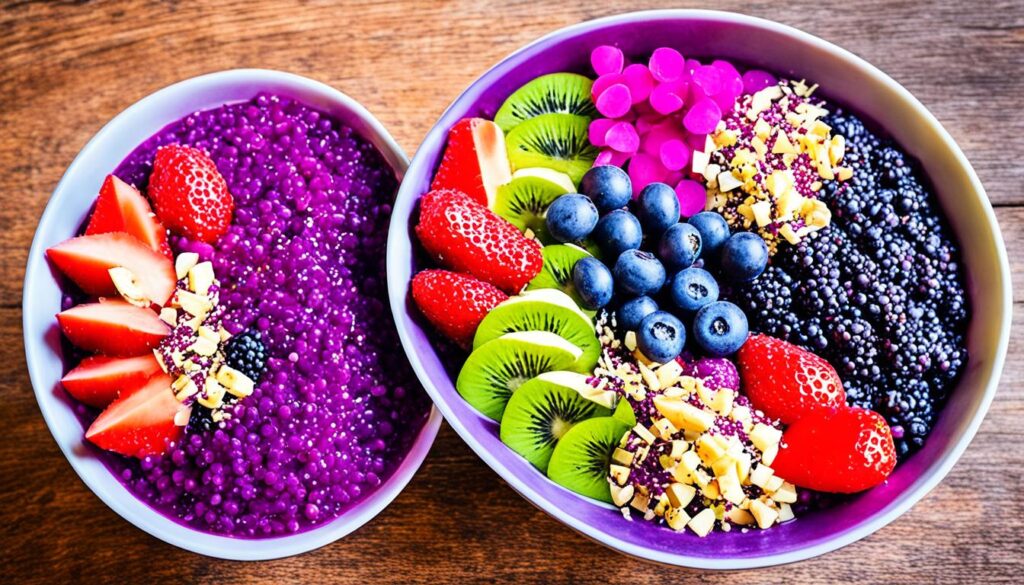
Using Acai Oil in Your Beauty Routine
There are various ways to incorporate acai oil into your skincare regimen. You can find skincare products such as moisturizers, serums, facial oils, and masks that contain acai oil as an active ingredient. Alternatively, you can use pure acai oil directly on the skin.
“Using skincare products infused with acai oil may help promote healthier, more youthful-looking skin.”
Cautions and Considerations
When using acai oil in your beauty routine, it is essential to consider a few factors:
- Purity: To reap optimum skincare benefits, use high-quality, pure acai oil. Look for products that are certified organic and free of additives or preservatives.
- Spot Test: Before incorporating acai oil into your skincare routine, perform a patch test on a small skin area to check for allergic reactions or sensitivities.
- Storage: Acai oil is perishable and should be stored in a cool, dark place. The container should be tightly sealed to maintain its freshness and efficacy.
Nutritional Value and Products
When it comes to acai and pitaya, there are various ways to enjoy these superfruits and reap their nutritional benefits. Acai is commonly sold as a frozen puree and can be found in various forms, such as organic scoopable acai, acai bowls, and acai puree cubes. These options offer convenience and versatility, allowing you to incorporate acai into your diet in a way that suits your preferences.
Pitaya, also known as dragon fruit, is available in fresh and frozen forms. It is commonly used in smoothies, bowls, and garnishes. Adding pitaya to your recipes can give them a vibrant color and a unique flavor profile.
| Acai Products Pitaya Products | |
|---|---|
|
|
Both acai and pitaya offer a range of nutritional benefits. Acai berries are rich in antioxidants, fiber, essential nutrients like vitamins A and C, and calcium. Pitaya is packed with vitamin C, iron, and magnesium. Additionally, both fruits are naturally low in calories and fat, making them a healthy addition to your diet.
Where to Buy Acai and Pitaya
You can find them in various locations if you’re wondering where to buy acai and pitaya. Many grocery, health food, and specialty stores carry frozen acai puree and pitaya in their freezer sections. Online retailers also offer a wide range of acai and pitaya products, allowing you to order them from the comfort of your home conveniently. Additionally, local farmers’ markets and fruit stands may have fresh pitaya available in season.
When purchasing acai and pitaya, it’s essential to read the labels and choose high-quality products. Look for organic options whenever possible to minimize pesticide exposure and other chemicals. Properly store the frozen puree or fruit to maintain their freshness and quality.
How to Make an Acai Bowl
A popular way to enjoy the benefits of acai and pitaya is by making a delicious and nutritious acai bowl. These bowls are visually stunning and packed with flavor and health benefits. With the right ingredients and a few simple steps, you can create a refreshing acai bowl that will energize and satisfy you.
Gather Your Ingredients
Before making your acai bowl, ensure you have all the necessary ingredients. Here’s what you’ll need:
- Frozen acai puree
- Assorted fruits of your choice (such as berries, bananas, and mango)
- Honey or sweetener of your choice
- Toppings: granola, coconut flakes, chia seeds, nuts, or fresh fruits
With these ingredients, you can start creating your acai bowl masterpiece.
Blend and Customize
Start by blending the frozen acai puree with a splash of water, juice, or non-dairy milk to achieve a smooth consistency. You can also add a sweetener, such as honey or maple syrup, to enhance the flavor. Blend until everything is well combined and you have a thick and creamy mixture.
Now it’s time to get creative and customize your bowl. Pour the acai blend into a bowl, and arrange your favorite fruits. You can slice them or arrange them as pieces for an eye-catching presentation.
Add Toppings for Texture and Flavor
To add texture and additional flavors, sprinkle your chosen toppings over the acai and fruit base. Granola adds a satisfying crunch, coconut flakes provide a tropical twist, and chia seeds boost omega-3 fatty acids. You can also top it off with a sprinkle of nuts or fresh fruits for added freshness.
Feel free to get creative and experiment with various combinations of toppings to find your favorite acai bowl creation.
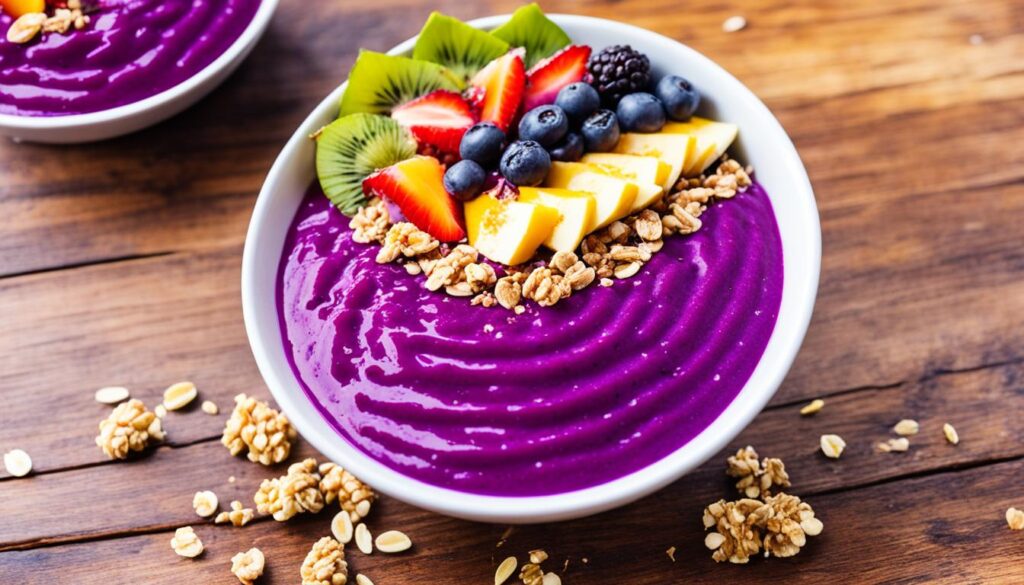
Enjoy Your Homemade Acai Bowl
Once your acai bowl is beautifully assembled, it’s time to enjoy your delicious creation. Grab a spoon and dig in, savoring the harmonious blend of flavors and the nourishing benefits of acai and pitaya.
Whether you enjoy your acai bowl as a refreshing breakfast, a post-workout snack, or a guilt-free indulgence, it’s a delightful way to incorporate the goodness of acai and pitaya into your daily routine.
Now that you know how to make an acai bowl, it’s time to roll up your sleeves, gather your ingredients, and unleash your creativity in the kitchen. Get ready to indulge in a wholesome and flavorful experience with every spoonful of your homemade acai bowl.
Safety and Side Effects of Acai and Pitaya Consumption
Acai and pitaya are generally safe to consume as food, so you can enjoy them with confidence. However, it’s essential to be aware of particular precautions to ensure a safe and enjoyable experience.
Considering acai pitaya nutrition facts, it’s essential to note that drinking pure, unprocessed acai juice should be avoided. Unprocessed acai juice may carry the risk of Chagas disease, a parasitic infection. To mitigate this risk, consuming acai berries or acai products that have undergone proper processing and preparation is advisable.
Furthermore, if you have an upcoming MRI (Magnetic Resonance Imaging) appointment, it is recommended to avoid consuming acai beforehand. Acai may interfere with the test results and affect the accuracy of the scan.
As with any dietary changes or supplements, it is always wise to consult a healthcare professional before making any significant alterations to your diet. They can provide personalized guidance and ensure that incorporating acai and pitaya into your routine aligns with your health needs and goals.
In Summary
Acai and pitaya are generally safe for consumption if certain precautions are taken. To minimize the risk of Chagas disease, avoid pure, unprocessed acai juice and opt for adequately processed acai products. If you have an MRI scheduled, refrain from consuming acai to prevent interference with test results. Remember, it’s always best to consult with a healthcare professional to ensure a safe and appropriate incorporation of acai and pitaya into your diet.
Conclusion
In conclusion, acai and pitaya are two superfruits offering numerous health benefits, especially for heart and blood sugar management. These fruits contain antioxidants and other essential nutrients that help protect against cell damage, reduce cholesterol levels, and regulate blood sugar. While further research is needed to fully understand their effects on different health conditions, incorporating acai and pitaya into your diet can be a delicious and nutritious way to diversify your nutrient intake.
There are several best ways to consume acai and pitaya. One popular option is to include them in smoothies, where you can blend frozen acai puree or pitaya with other fruits, yogurt, or milk for a refreshing and flavorful treat. Both acai and pitaya also make great additions to bowls, where you can top them with granola, coconut flakes, and fresh fruits for added texture and nutritional value. Lastly, you can find acai and pitaya products like frozen puree or fresh fruits to create recipes and enjoy their benefits anytime.
However, it’s essential to consult with a healthcare professional before making any significant changes to your diet or adding supplements. They can provide personalized guidance and advice based on your specific health needs. So explore the wonderful world of acai and pitaya while keeping your health in check!


